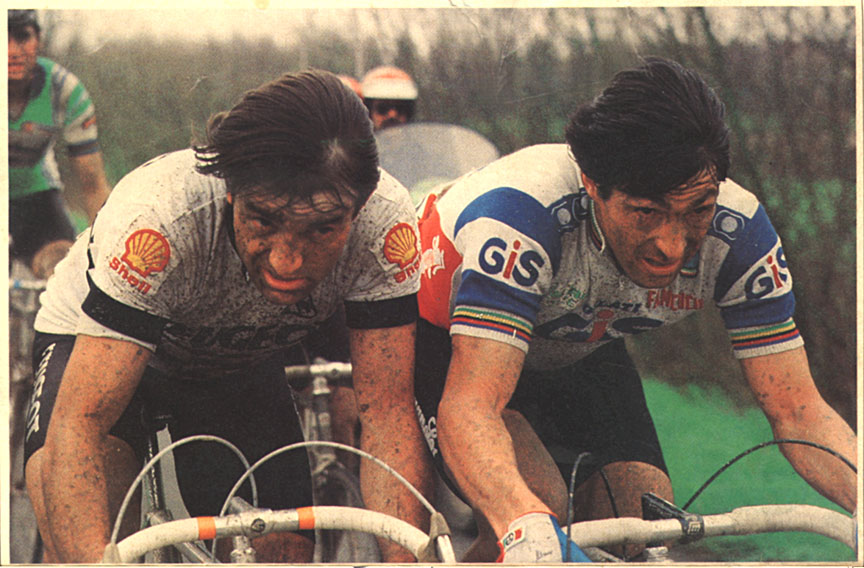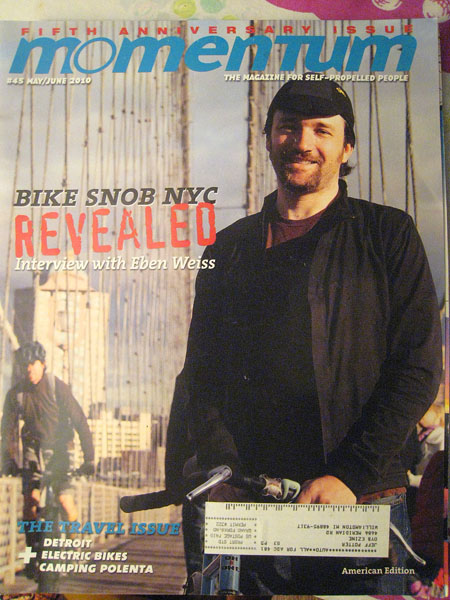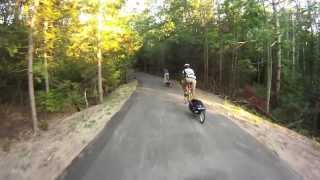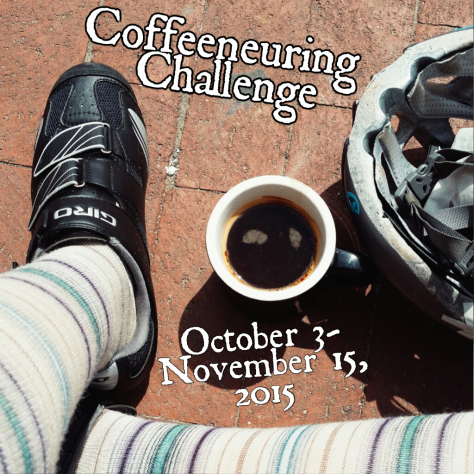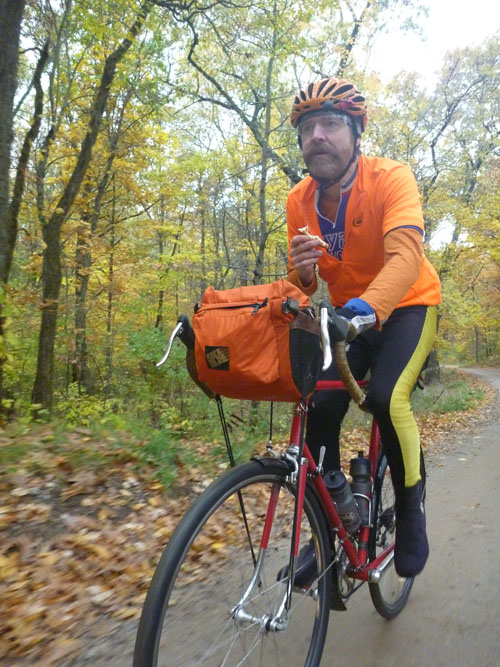Bike racing is a fun sport. Or it used to be. You’ll have to tell me. Perhaps the main thing that has changed about it is that you’ll need a carbon bike with aero wheels to do well. You’ll want the bike to weigh no more than 18 lbs. I hope such a thing is available, built of reliable parts, with an enjoyable geometry, for $2k or so, or I pity the youngsters interested in the sport. Anything less aero or heavier is so much more likely to get its rider dropped from the action, sad to say. It IS about the bike. To that extent.
Sure, a strong rider can ride above their pay-grade and as a Cat 4 quality of rider, say, can ride a 22-lb oldschool spoked bike and hang with the Cat 5’s. If you want to do that, fine.
But, really, racing is about being on par. And 17-lb carbon + aero wheels is the new par.
Now that the bike is settled, where next?
I’ll give you the basics and some details. If you do as I say, you’ll do really well. If you don’t, let me know. You’d be the first!
Oh, you can skip my ideas and do fine in racing. You’ll get better automatically…but so will everyone else. Your natural aptitude and traits might lift you higher, who knows. But with some of these ideas, if you only do them a couple times, they’ll really help. If you make sure to at least touch on all of them, you’ll advance FAR faster than by taking the usual path. You’ll get results quite a bit higher than your fitness, even. Certainly, nothing will be holding you back. These are in effect secret tips. Your rivals are likely NOT doing them. Really, in one season by using these ideas you’ll have mad Cat 2 skilz. And you’ll have a LOT more fun in every event.
First, you want to ride a good 5 hrs a week. If you want to do better, you’ll ride more. 2 hours a day is something that any rider can build up to almost any height of results without going pro. Good regional is easily within your grasp. And by 2 hrs I mean a half-hour warm up, an hour ride, a half-hour cool-down. So 12 hrs a week is more like it. Build up to it over a year or three. Or, ride as you please.
Periodize your training on both micro and macro levels. Have hard, medium and easy riding days. Long, short. Fast, slow. Speed, power. Mix it up each week. Definitely get in one honestly easy outing weekly when you’re early in your career. (Later on, older Masters with limited time can have every ride be at a higher level if they like.) Mondays are great easy days, after a weekend’s racing. Little chainring won’t hurt. 18mph. Then have easy, medium and hard weeks. Then do the same with months. March/April can be easy base miles — with spice thrown in when the weather is nice. May can be medium. You might be doing hard rides and racing, but your volume, etc., is overall medium. June is racing plus hard training. July is easy training and living off the gravy: top racing results. Throw in a hard week and hit another peak in August. Back off again in Sept, step up in Oct and get ready for cyclocross in Nov. Little wave-patterns mingled with bigger wave-patterns.
Weight train in winter.
At this point we’re where most racers start drinking beer. Where they leave off. They’re doing club rides and racing. The better ones are periodizing, but the season itself tends to do this to an extent. This is as far as most racers go.
My next tips will bring you to the next level. Using my tips you’ll move up. Be prepared! Do you want to move up? You’ll be a contender. Do you want to win?
#1: First, crash-proofing. You must refuse to crash. Attitude is over half the game. Never blame anyone. It’s never anyone’s fault but your own if you crash. So don’t. Be prepared. Even if you do crash (hey, there’s no defeating physics) you can “refuse to crash” all the way down. This keeps you in crash management mode even if you do crash. This at least serves to minimize damage. It becomes more like landing an airplane if you are in fact going down. Accidents do happen, after all. Just way less often to you when you have the right attitude! Really, accidents aren’t usually accidental — an experienced person sees them way ahead of time. And is somewhere else when they happen. But if you get a flat in a fast turn, well, just land that plane. Even when you’re crashing you don’t have to lose control. Keep whatever control you can — it’s a lot more than you think! (And make sure you’re using good tires so you don’t flat in the first place. I’ve crashed thrice due to rolling sewups. Doh! My fault every time.)
To do all this: Ride around with your pals and bump shoulders, arms, hips. Do this in your first gear. It’s easy. In a little gear with everyone at the same footspeed nothing bad will happen. OK, to be safer, do it on grass. That’s what we used to do. Ride around a park in the grass trying to knock each other down. Ram your front wheel into their rear wheel. Lean, rub. See what happens. See how NOT to fall. Get your elbow under someone’s thigh and don’t let go of your bars — just pry them off you. (In “hooky” situations, ride on the drops so other bars can’t hook into yours.) Then get off your bike and run in the grass and tumble. Learn to do diving falls and rolls with smoothness. Tuck your head. It’s been decades but this is what our coach had us do. Mike Walden. The USA’s best bike coach. Of the Detroit Wolverines. Now I forget but he might have even had us dive off of our bikes in the grass and roll. Try what you like. Then rub your front wheel on someone’s rear while on the road. Everyone do it a few times. Be prepared.
You can refuse to go along with most crashes. Ride over people, bikes and roadside objects, if need be. It’s totally doable and better than falling on them. Stay up even if all your spokes are being ripped out by someone’s pedal. You can stay up on a bike even as it crumples beneath you. You can stay up if you have to ride off the road into a ditch. You can “stay up” even when you’re going down. (And get your hand out from under the handlebars while you’re at it.) Learn about deceleration. Learn to bunnyhop. Learn about skidding and sliding.
In any event, study all riders beforehand. Line up early. Stay at or near the front. Definitely stay away from anyone who is sketchy. After a hard effort, to recover you can let yourself drift back maybe 2 places in the field. That’s your rest. Don’t go back very far! Ever! And don’t dig so deep into your reserves that you do go cross-eyed in a way that makes you want to hide in the “easiest” part of the field. Sure, it’s sucking everyone along — it’s also crashing them and accordinging them. It’s a mess. Sometimes in a crit going somewhat off the front is the thing to do when you’re feeling ragged — a few might come along and ride smoothly so you can keep a constant effort and be more efficient. Shift down a gear going into a corner so you’re ready to come out. To move up, brake less or last going into a corner and find space. (The space will be easy to find if you use tip #2.) On flat corners steer the bike and power thru.
Good position on your bike has everything to do with crash-proofing. And fun and speed. Get a pro fit. You want to be stretched out a ways and you want to ride with bent elbows. You don’t want weight on your hands. It’s common these days to set things up so you ride with stiff/straight arms. Bad idea. More work. Less ability to ride fast and handle your bike … and avoid crashes. With bent arms and no weight on hands you can fend off most anyone. You can reach out and tap riders to let them know where you are. A famous drill is to ride alongside another rider and hold a penny between his and your elbows. Bent arms let you do this. It’s easy. Try letting go of both hands while in your usual riding position. Your head shouldn’t drop. Bent arms lets you look behind you without swerving. Practice this. Jam in the drops (or max low posture on the hoods) then look back — you’ll look UNDER your arm — that’s good. Don’t swerve. Focus calmly on seeing what’s behind you then look forward again. Don’t swerve. Practice. Oh, and when you get out of the saddle to climb, don’t throw the bike back.
Sure, sometimes you WILL crash. But even then you can be in control all the way. Land your bike onto the pavement like a pilot touching down a plane. Let the handlebars grind first — get your hand on top. There are things you can do to make the crash better and less painful all the way until you stop. You can check for traffic coming up behind as you’re sliding so you know what to expect in terms of duck’n’cover. By not panicking at any point the whole thing goes far, far better.
#2: Race or train on a velodrome. Be willing to drive a few hours monthly if need be. This is a HUGE deal. It’s really probably Tip #2, but whatever. Join a velodrome program that teaches all the events and drills. Every time you ride the velodrome you want to make sure you do it ALL. You want the warmups and handling drills, the snaking around follow the leader steering drill. You want the Miss’n’Out, Devil-take-hindmost, Points Race, Match Sprint, Kilo and Pursuit. Even a Madison! YES! A quality program will have all this. Do it all. After a few of these every other bike race situation will seem simple and spacious. You’ll never worry about a crowded field again or moving up or bumping. You’ll be far safer, far smarter. Most programs have loaner bikes. Do it!
#3: Race cyclocross. It’ll teach you bike handling. You can sometimes use your road bike with ‘cross tires. Try to buy your road bike with enough clearance for 28mm ‘cross tires. It might be possible. (My Giant TCR can do it. Barely.) Most races don’t really require canti brakes — they aren’t that muddy. Or, find a bike you can cross up.
#4: Participate in midweek training races. Drive a few hours for them if need be. The best ones will have several different events in an evening. I used to do Grattan when it had 5 events in an evening. It was set up like a Track Evening, even! We had Miss’n’Outs and Time Trials and Match Sprints and Points Races. All on this wonderful little closed, park-like motor race course for road motorcycles and small sports cars. It had off cambers and chicanes, banked turn, the works. You could work on skills, screw up, rest up, and get ready for the evening’s next event. In these midweek events pick your spot. Try to do some one thing better than before. Mix up buffing your strong suit with trying to do something you’re bad at good once. A lot of these events will be on a closed course with lots of laps, so if you blow up after trying something you can drop out for awhile then restart at some point. It’s just for fun — working on skills.
#5: Join a club/team. Ideally, one with a coach. Coaches seem scarce these days, but they always were. People now have online personal coaches. …Find a coach. Other, better riders can kind of help you but their focus is elsewhere, really. A coached club will have much better group rides. They’ll be sorted by ability. You know they’re good because people are chafing at the limits: they want to move up to the next group but the coach won’t let them. Good! They’ll get there soon enough. Gotta earn it. In the meantime, structured group rides go faster and work you harder than “really fast wild rides.” Uncontrolled rides tire people out because they’re nervous and inefficient, not “fast.” They also ruin a lot of seasons due to crashes. Only do “wild” rides occasionally. Also, and this is a HUGE tip: train with a totally different group now’n’then. Michigan has a certain training/racing style. So all racers in SE Michigan should sometimes make the trip over to Windsor in Canada and do the training race with the Ciociaro Club of Italian racers. They’ll show you something totally different! It’s crazier, more Eurostyle. A real change! Get used to it! It’s good for you!
#6: Ride with better riders. Try to go on training rides and group rides with riders from categories better than yours. Be humble, be helpful. Pay attention, obey. Learn. A Cat 4 who rides with Cat 2’s will soon be a Cat 3. You’ll find out that the best area riders mostly train alone. You shouldn’t do that as a beginner, but you will sense that a couple times a week you’ll want to go off on your own to work on specific things you need.
#7: Take care of your bike. Never have a mechanical! Inspect tires after each ride. Never miss a ride or let down your pals due to negligence. Mechanicals are your fault. Keep your chain clean. If your chain is never dirty, your bike won’t be either. Learn the bucket/brush cleaning method. Change your chain when it shows the slightest sign of stretch. Make sure your bike is set up right for you. Fit it pro. Make sure your gloves, bar-tape, saddle, shorts, eyewear are all just-so. Are your hands ever slippery on your bars? Fix that now! Grip is what you want! Can you easily move to a variety of helpful positions on your saddle? Great! Being able to move a couple inches fore and aft helps keep legs fresher, is good for changing up your power styles. Are your pedals spot-on? Never a surprise release yet you know how to get out every time. Be ready for the weather with your clothing. Work on weather-tolerance as well. Sunscreen, band-aids, anti-bio ointment, gauze, tape, tools. Whatever you need, whatever works for you: have it; do it.
#8: Learn to change a flat quick. If you’re riding with a group and you flat, be the fastest back on the road that they’ve seen. Know what you’re doing and don’t fumble and you’re golden. Little glitches don’t have to mess up the flow at all.
#9: Motorpace! Find someone who has a moped and have them pace you on empty country roads for a half hour. As you become rockin’ and rock-solid, up it to an hour. Each month. The driver has to know the score. Ideally they’re another racer. They need to keep tabs on you in their mirror and look ahead. Thumbs up means faster by 1mph, thumbs down a bit slower, flat hand means hold steady. They need to sit up tall and wear a big coat. Warm up behind them then practice coming around them a few times. 25mph is a good start. Then find someone with a small motorcycle and bring the speeds up. Cat 2 action happens with motorpacing at 40mph. Pick a road with a slight crosswind then do the work laps so that the moto is in the center of the lane and the rider behind them and slightly to their right, in view of the mirror and in a draft optimized slightly to the side. Every now and then get behind a small hatchback car with a friend sitting in the back area and the hatch up and wedged with wood. You can go fast this way. 50mph. Of course, be very careful. Pick only the most optimal roads. People do mount rollers on motos, etc., so if you bump nothing bad happens. If you use your head and set everything up right you’ll be fine.
#10: Intervals of all types and lengths. Downhill and tailwind sprints. Biggest-gear riding out of saddle, on flats and up hills. Intervals and sprints each 1x/wk.
#11: Restricted gear group rides. Everyone picks the same smallish gear and spins 90+ and finds they can ride much closer together. See what you can do when everyone is in the same spinny gear. It’s amazing. You can control your position so much easier in the group. This shows you the crime of big gears and slow feet, where any slight momentary change of footspeed can move the rider many inches, requiring coasting, braking and other terrible things.
#12: Fat-burning anti-bonk rides. Ride easy every other week or 3 for a few hours. Don’t eat. After an hour your glucose reserves are gone. If you’re going easy that won’t matter. It’ll feel weird but you’ll be fine. It’s good for you.
#13: Spin 90+ rpm for the first month each season. Builds capillaries.
#14: Ride one-legged for a minute now’n’then. It’s like using Rotor cranks. Improves your spin, builds strength.
#15: Do rotating pacelines if your group doesn’t already. Ride steady. Read the wind. In sidewinds, morph the pacelines into echelons. Learn about echelons. Then learn about winding up pacelines into jams and city limits sprints. Safely. Learn about sitting slightly off the back if tired to recover without being dropped while letting others know clearly to rotate over and thru ahead of you.
#16: If you’re going to do a few races in a summer, shave your legs. You’ll be happy about it.
#17: Do self-massage. Elevate your legs a few minutes after rides and give em a rub-down. Do whatever stretching is in vogue.
#18: Do calisthenics. Don’t neglect your core or all body balance and dynamic mobility.
#19: Don’t eat after 10pm. Go for a post-prandial walk.
#20: If you’re powerful and just doing flat crits, you don’t have to be skinny, but skinny helps. Best way to be skinny seems to be to lay off the carbs, sugars, other than right proximate to riding/racing. (Eat right after for best recovery.) If possible give yourself the test of getting so skinny that you notice a strength drop, then eat a bit more.
#21: Work on pedaling. Kick the soccer ball over the top of the stroke. Wipe your feet on the mat going down thru the bottom. Ankle sometimes. Tippytoe sometimes. Your fastest sprints will be in the saddle. Out of the saddle is for quick jumps and accelerations from slower speeds. Don’t thrash your bike around.
#22: Know yourself! Pick some unimportant races to work on weakpoints. But don’t get off the plan for the big ones. Play your best hand then. Without distraction. What do you need for your best results? Most need a certain kind of warmup or pre-race ritual. Find what works for you. Being really warm, fast and sweaty before a start is a good idea. Rollers are popular for this but you can use city blocks, usually. The mental game is critical as well. Listen to good music. Avoid any bad talk that doesn’t help you! Some people will accidentally do things that can hurt your chances. (Common pre-race banter includes whining and complaining: it can hurt your chances if you hear it.) On race day, pay attention to what you need and do only that, shunning all else. No wasted motions. Pack the night before and know the drill. At the same time, be as decent and normal as possible. Usually the exceptional behavior is only needed in terms of warmups getting close to start-time. Pre-ride the course and learn the finish. Find all bad spots, potholes. Study the wind and locate any naturally sheltered places.
#23: VOLUNTEER FOR YOUR CLUB! Help others. Teach juniors. Show up early and stay late for every club-hosted event. Be a club officer. Definitely do something needed for your club or scene. If your club doesn’t host a race, help out at some others. Fundraise. Talk to a business about sponsorship. Represent well. (No misbehavior, esp in club apparel.) Keep your kits washed.
…That should do it! : ) …Enjoy!
If you do it right, you might find yourself sick, hurt or tired most of the time. Useless for most anything but bike racing. And broke.
I suggest doing it not quite right. Do it some. Do all my tips though. You don’t have to overdo it, or do them much. You won’t have to overdo things nearly as much when using all my tips. Good luck!
